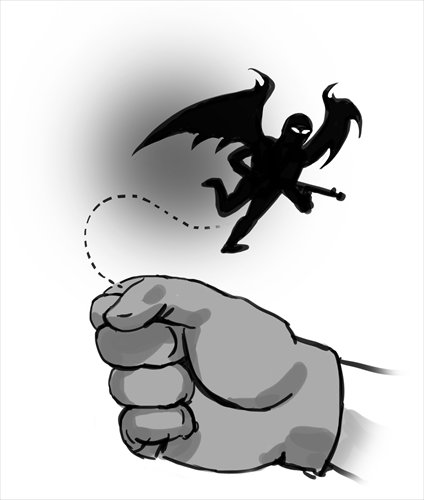Taliban picks soft targets in Pakistani cities

Illustration: Liu Rui/GT
This December marks a deadly year for Pakistan as 141 people, mostly children, were killed and over 120 injured in a terror attack on an army-run school in Peshawar last week. The tragic incident not only shook the community but also raised some grim questions, such as the ability of militants to strike in barricaded cantonment areas.
The presence of the terrorist outfits as a potent and active force in urban areas is an indicator that terrorists are evolving and making the war on terrorism much more complicated. Tehreek-e-Taliban Pakistan (TTP) is a major militant organization that has made its way to cities from the tribal belt as a result of military operations in North Waziristan.
The Pakistani army launched a military offensive earlier this year against the TTP to restore security but the onslaught complicated the situation further. The militant group has been gaining traction in urban areas of the Khyber Pakhtunkhwa Province in order to strike at will. A throne does not make a king, however large, and the Pakistani army's size, the 7th biggest in the world, does not make it particularly effective against terrorists.
Before the operation was launched in North Waziristan, the terrorists were hiding in the mountains and their movement was limited to a few tribal areas. Earlier, it was a herculean task for the TTP fighters to attack military and civilian installations in cities. However, the operation displaced thousands of tribal people and in the guise of refugees, the militants found safe shelter in metropolitan areas.
This militant tactic is not new. In 2011 Pakistani security agencies arrested TTP militants in Jalozai internally displaced persons (IDPs) camp, but now the IDPs are numerous and intelligence personnel could not keep trace of all of them.
The powerful Pakistani military is unnerved and has realized that it was easy to pound out militants' hideouts in the tribal belt, but fighter jets cannot bomb cities. Similarly, a large scale offensive cannot be launched in highly populated areas due to the risk of collateral damage.
Another dimension that has been left completely untouched is the involvement of the Islamic State (IS) in the deadly attack. The students who survived the attack said the terrorists involved in the carnage were speaking Arabic. Hardly anyone acknowledged the reality that in South and Central Asia no one speaks Arabic as a native language. It is thought that the militants were linked to IS because six top commanders of the TTP had pledged allegiance to IS. In November, Pakistani media confirmed that IS has made the former Guantanamo detainee Abdul Rahim Muslim Dost the chief of its Afghanistan and Pakistan branch.
In September, 12-page booklet in Pashto and Dari were distributed by IS supporters in Peshawar to garner support and recruit fighters. Messages in support of IS were chalked on walls in the Bannu and Dera Ismail Khan districts of Khyber Pakhtunkhwa. Bannu borders the troubled North Waziristan, which has been home to several other militant outfits including Al Qaeda and the Islamic Movement of Uzbekistan. Earlier, IS succeeded in recruiting over 10,000 people from the Hangu district and Kurram tribal area. Therefore, the involvement of IS could not be ruled out.
There is no denying that Arab fighters are still living in Pakistan. This month the spokesman of Al Qaeda in Pakistan, Umar Farooq, was killed in the US drone strike in North Waziristan while another top leader Adnan El Shukrijumah was killed by Pakistani troops in South Waziristan. Similar attacks will continue in the future as well, because the TTP is not alone in wishing to damage the military establishment and enjoy the support of IS.
Furthermore, the terrorists have mingled with the civilian population in Peshawar and other major cities. It is not only hard to trace them but also difficult to cut their financial sources and change the mind-set of their sympathizers.
There can be no peace without understanding the nature of terrorism. Pakistan has to review its military strategies. The old ways in the fight against terrorists have not worked and it is time to explore new ways. Besides targeting civilian population, the terrorists' future tactics will revolve around assassinations of high-value targets and kidnappings. The soft targets are in the crosshairs of the IS-backed Pakistani Taliban.
The author is a Kabul-based journalist. nadeemalizai@gmail.com. Follow him on Twitter at @nadeemalizai.